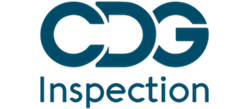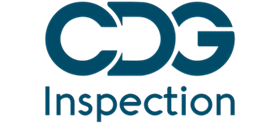Introduction:
In the realm of pharmaceutical and biopharmaceutical manufacturing, ensuring product quality, safety, and efficacy is of paramount importance. Computerized systems play a pivotal role in various manufacturing processes, from production to quality control. However, their reliability and accuracy heavily depend on proper validation. Current Good Manufacturing Practice (cGMP) regulations enforce rigorous validation standards to ensure that computerized systems function correctly and consistently. This article delves into how cGMP audits evaluate the control of validation for computerized systems used in manufacturing, emphasizing the importance of compliance to ensure the integrity of pharmaceutical products.
cGMP and Computerized System Validation:
cGMP regulations are designed to ensure that pharmaceutical products meet defined quality standards and are produced consistently. The advent of computerized systems in manufacturing necessitated the establishment of stringent guidelines to validate their functionality. Computerized System Validation (CSV) is the process of documenting and verifying that a computerized system performs its intended functions accurately, reliably, and consistently in accordance with predefined specifications.
Components of Computerized System Validation:
CSV comprises several essential components to ensure the robustness of computerized systems:
- User Requirement Specification (URS): The URS outlines the system requirements from the user’s perspective. It defines the functionality, performance, and operational characteristics that the computerized system must possess to meet user needs.
- Functional Requirement Specification (FRS): The FRS translates the URS into detailed technical specifications. It outlines how the system will perform its functions, including inputs, outputs, data flows, and user interfaces.
- Design Specification (DS): The DS describes the technical design of the system, including hardware, software, data structures, algorithms, and interfaces. It ensures that the system’s design aligns with the defined requirements.
- Installation Qualification (IQ): The IQ phase involves verifying that the hardware and software components of the system are installed correctly. It includes testing hardware installation, verifying software versions, and documenting configurations.
- Operational Qualification (OQ): OQ verifies that the system operates as intended within its operating environment. It involves testing individual functions and processes to ensure they meet predefined specifications.
- Performance Qualification (PQ): PQ assesses the system’s performance in its operational environment using simulated or real data. It ensures that the system consistently produces accurate results under various conditions.
- Traceability Matrix: A traceability matrix links each requirement (URS, FRS) to its corresponding testing phase (IQ, OQ, PQ). This ensures comprehensive coverage of testing activities and helps demonstrate compliance during audits.
Evaluating Validation Controls in cGMP Audits:
During cGMP audits, regulatory authorities scrutinize the validation controls for computerized systems to ensure compliance with established standards. Here’s how they evaluate the control of validation:
- Documentation Review: Auditors assess the documentation generated throughout the validation process. This includes URS, FRS, DS, test scripts, protocols, and reports. Proper documentation demonstrates that the validation was well-planned, executed, and documented.
- Validation Strategy: Auditors examine the overall validation strategy to ensure that it covers all critical aspects of the system. They verify that the strategy aligns with the risk assessment, considers data integrity, and addresses system interfaces.
- Risk Assessment: A comprehensive risk assessment identifies potential vulnerabilities in the system. Auditors evaluate whether the risk assessment is thorough, accurate, and informs the validation approach, focusing on areas of higher risk.
- Change Control Procedures: Auditors review change control processes to ensure that modifications to computerized systems are properly documented, assessed for impact on validation, and revalidated if necessary.
- Data Integrity: Data integrity is paramount in pharmaceutical manufacturing. Auditors examine data integrity controls, including access controls, audit trails, electronic signatures, and data backup and recovery processes.
- Validation Testing: Auditors assess whether the system underwent appropriate testing in line with IQ, OQ, and PQ protocols. They review test scripts, execution records, deviations, and acceptance criteria to ensure thorough testing.
- Deviation Management: In case of deviations from established protocols, auditors assess how these were handled. Adequate investigation, documentation, impact assessment, and corrective actions are expected.
- Training and Competency: Auditors review training records to ensure that personnel involved in validation and system operation are adequately trained and possess the necessary skills.
- Supplier and Vendor Assessment: If the system involves third-party suppliers or vendors, auditors evaluate the supplier qualification process and the controls in place to ensure the system’s compliance.
- Periodic Review and Revalidation: Auditors assess whether systems are periodically reviewed and revalidated to ensure ongoing compliance with changing requirements and system performance.
Common Audit Findings and Best Practices:
Despite the importance of computerized system validation, audits often uncover certain common findings:
- Insufficient Risk Assessment: Inadequate risk assessment can lead to overlooked vulnerabilities. Conduct a comprehensive risk assessment to identify and mitigate potential risks.
- Inadequate Documentation: Poor documentation practices, missing records, or incomplete documentation can result in audit non-compliance. Maintain detailed and organized documentation throughout the validation lifecycle.
- Lack of Data Integrity Controls: Data integrity violations can undermine the credibility of the entire validation process. Implement robust data integrity controls, including audit trails and electronic signatures.
- Incomplete Testing: If testing is not comprehensive, the system’s performance under different conditions might remain unverified. Thoroughly test all functions and scenarios outlined in the specifications.
- Inadequate Change Control: Changes to validated systems should follow a stringent change control process to prevent unintended consequences. Ensure changes are properly assessed and validated before implementation.
- Inadequate Training: Personnel involved in system operation and validation must receive adequate training to ensure proper execution and compliance.
Conclusion:
The evaluation of computerized system validation during cGMP audits is a critical aspect of ensuring the quality and integrity of pharmaceutical manufacturing processes. Proper validation controls, comprehensive documentation, risk assessment, and adherence to regulatory standards are essential to passing such audits successfully. By following best practices and maintaining a robust validation process, manufacturers can demonstrate their commitment to producing safe and effective pharmaceutical products while complying with cGMP regulations and safeguarding public health.





